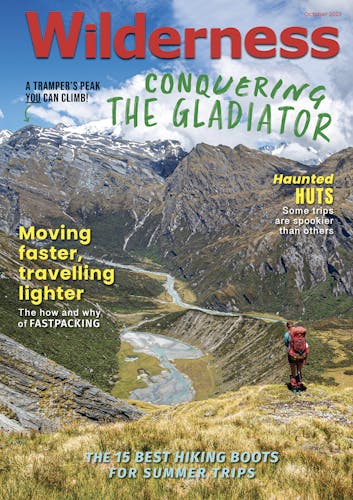There are fast walkers and there are slow walkers. Whatever your pace, just remember, it’s not a race.
As we stop to say our goodbyes, the Finn, with piercing blue eyes, says: “It is unlikely we will meet again. You are a slow walker. I am much faster. I doubt you will catch me up.”
And with that, he speeds off down the road, I turn into the holiday park in search of a bed for the night.
He isn’t wrong. My slow walking pace is glaringly obvious. After almost a month on Te Araroa Trail I was routinely the last into camp each day. It wasn’t uncommon for me to be overtaken by other trampers who seemed able to pack in many more kilometres.
I could blame my fitness levels or the weight of my pack but, really, I just couldn’t get my legs to move fast enough.
There were consequences. Many walkers commented on my speed often suggesting that were I more ‘lightweight’ I’d be faster. Two women with a similar pace to mine joked that we should form a slow walking group. When I was joined by my fiancé to walk the South Island, he was constantly stopping to wait for me.
I began to think there was something wrong with me. I was comparing myself to every walker who zoomed past and, by my estimation, I didn’t cut the mustard. The pressure was intense: I shouldn’t be so slow.
But after catching my fiancé for the umpteenth time, and apologising for lagging behind, he told me to stop beating myself up. “There’s nothing wrong with being a slow walker. You’re just being you. You don’t need to apologise for that.”
It was as if I’d been slapped with a wet sock.
Who said I should be a fast walker? Since when does fast constitute better? And who flippin’ cares how fast or slow I walk anyway?
Working through the permutations of what was fast and what was slow walking, and the grey line in between, I stumbled across an interesting thought. Until now I’d been thinking that slow walking equalled ‘bad’ and believed it wasn’t the way one should tramp. But what if it didn’t matter?
There could be advantages to being slow, like being able to better appreciate the beauty and splendour of the great outdoors; to pick up details – the light filtering through trees, a shared flirtatious moment with a fantail – rather than head down, legs pumping, distance covered, chest-beating (optional).
It might mean more care, with fewer slips, slides and potential injuries. Endurance and energy consumption might be better, too. And there’s the added perk that faster-walking partners might offer to carry kit to ‘help you out’. And the opposite; slower can be a nifty trick to avoid getting stuck with walkers you’d prefer not to be stuck with.
Modern life can be a hamster wheel. We’re rushing around, putting pressure on ourselves with what we ‘need’ to achieve, so why bring the same mindset and pressure to the great outdoors? It was a revelation.
And so I plod, enjoying the mountains and valleys where we’re allowed to breathe and just be ourselves.








